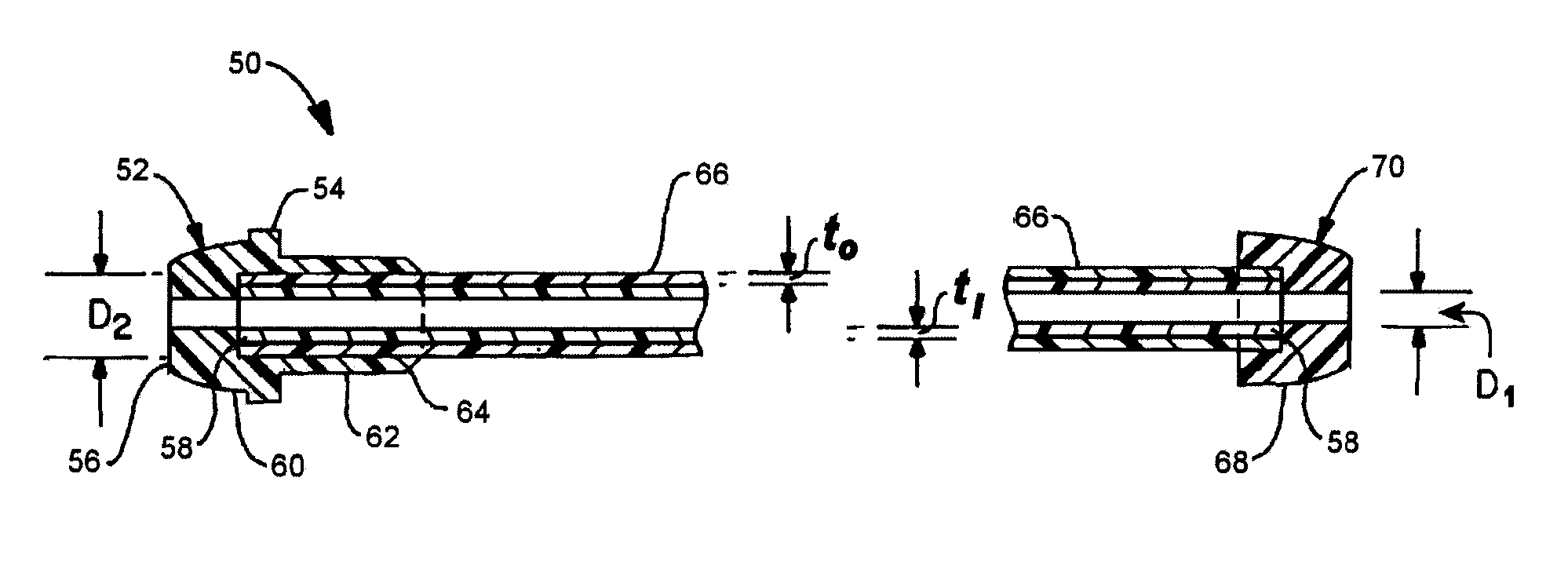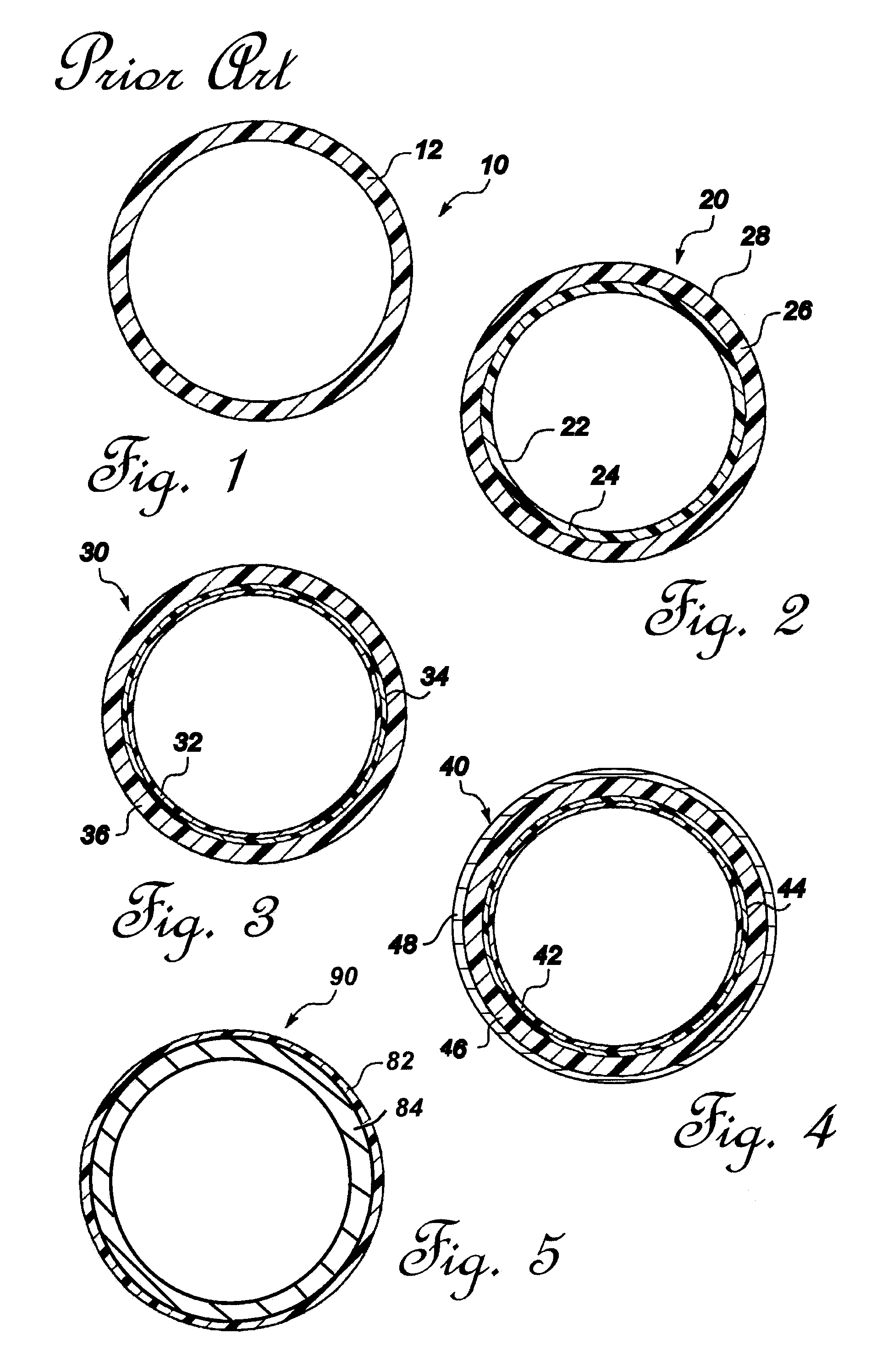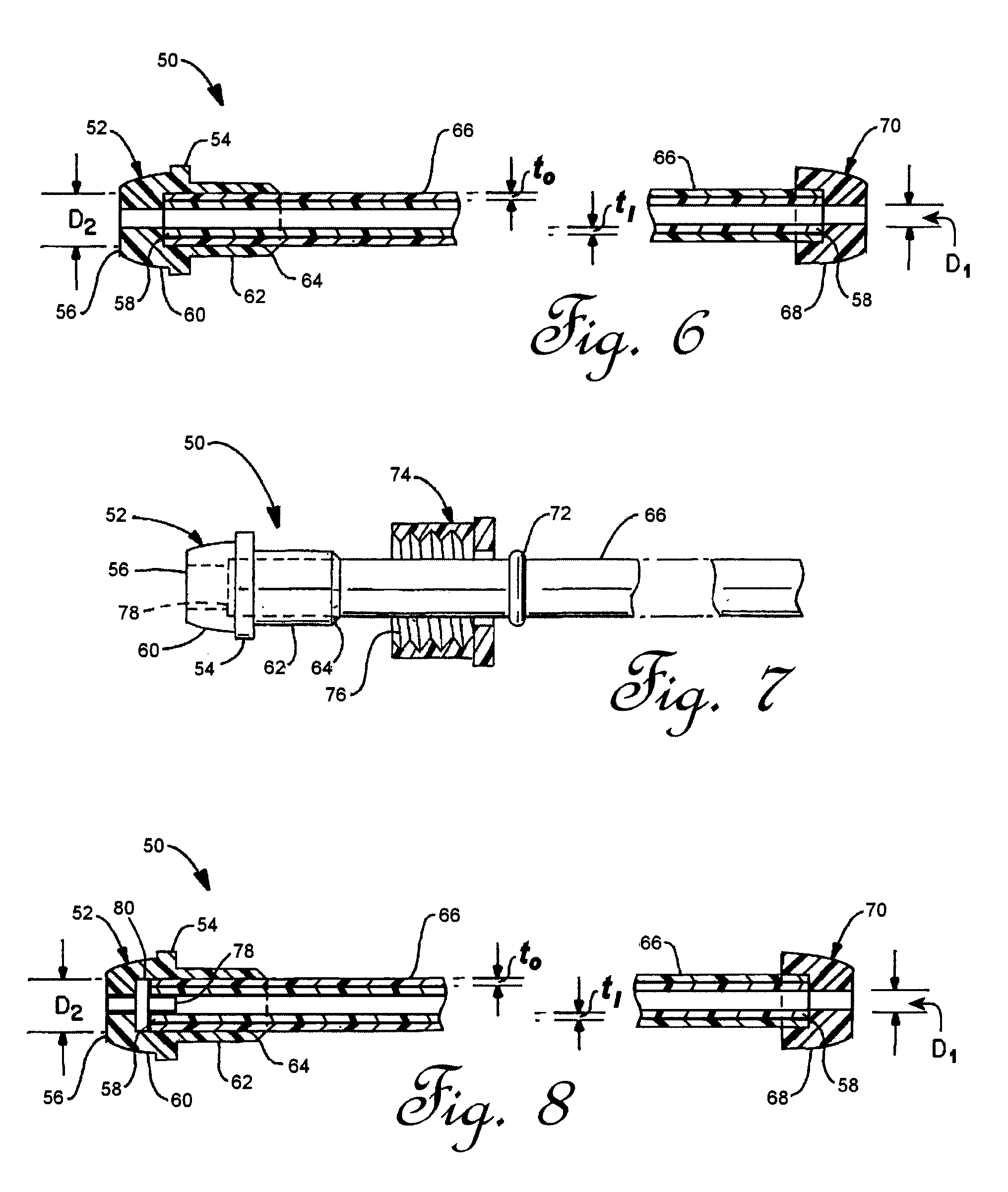Multilayer tubes
a technology of plumbing tubes and pipes, applied in the direction of flexible pipes, mechanical devices, pipes, etc., can solve the problems of wall thickness, potentially more susceptible to kinking, and thinner walls, and achieve the effect of poor flexibility and reduced wall thickness
- Summary
- Abstract
- Description
- Claims
- Application Information
AI Technical Summary
Benefits of technology
Problems solved by technology
Method used
Image
Examples
example # 1
EXAMPLE #1
[0049] A multilayer tube was made by coextrusion using an inner layer of polypropylene at 0.065″ and an outer layer of Santoprene at 0.015″. Two high density polyethylene ends with sealing surfaces as illustrated in FIG. 5 were overmolded onto the multilayer riser tube and crosslinked via electron beam processing.
example # 2
EXAMPLE #2
[0050] A multilayer tube was made by coextrusion using an inner layer of high density polyethylene at 0.030″ and an outer layer of linear low density polyethylene at 0.050″. Two linear low density polyethylene ends with sealing surfaces as illustrated in FIG. 5 were overmolded onto the multilayer riser tube and portions of the tube crosslinked via electron beam processing.
example # 3
EXAMPLE #3
[0051] A multilayer tube was made by coextrusion using an inner layer of high density polyethylene at 0.030″ and an outer layer of a blended thermoplastic elastomer at 0.050″. The outer layer blend consisted of 24% ultra low density ethylene octane copolymer (0.857 g / cc), 6% amorphous very low diene containing ethylene-propylene diene terpolymer (0.84-0.9 g / cc), 26% ethylene octane copolymer (0.885 g / cc), 40% linear low density polyethylene (0.92 g / cc) and 4% silver pigment). Two high density polyethylene ends with sealing surfaces as illustrated in FIG. 5 were overmolded onto the multilayer riser tube and crosslinked via electron beam processing.
PUM
 Login to View More
Login to View More Abstract
Description
Claims
Application Information
 Login to View More
Login to View More - R&D
- Intellectual Property
- Life Sciences
- Materials
- Tech Scout
- Unparalleled Data Quality
- Higher Quality Content
- 60% Fewer Hallucinations
Browse by: Latest US Patents, China's latest patents, Technical Efficacy Thesaurus, Application Domain, Technology Topic, Popular Technical Reports.
© 2025 PatSnap. All rights reserved.Legal|Privacy policy|Modern Slavery Act Transparency Statement|Sitemap|About US| Contact US: help@patsnap.com



